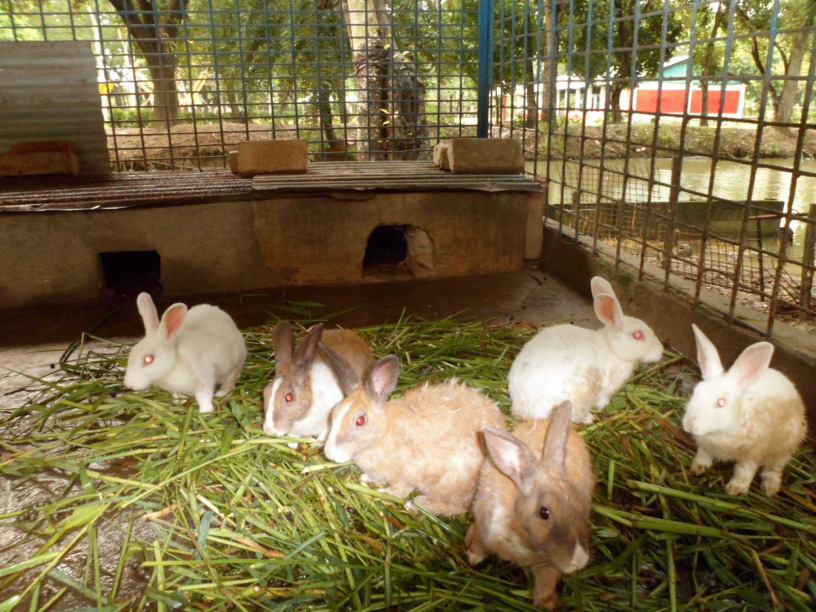
In 2017 Jamal Ochieng, a graduate from University of Nairobi decided to take up animal rearing as a source of income as a result of unemployment. Immediately after graduating in September 2015, Jamal went job hunting and was not able to get anything promising for two years and at that point he decided to look for an alternative source of income.
With a variety of options in farming, Jamal had to pick a farm produce that did not need much of monetary investment. He first tried out chicken farming but this made him have more losses than profits. He then decided to take up rabbit farming a venture that has enabled him to take care of his two smaller siblings.
“At first I choose chicken farming since it looked like a venture that would give me quick returns since it’s a commodity that is constantly consumed and I was based in Nairobi. But this was not the case, I lost half of my chicks as a result of diseases and the rest that remained did not fetch much money once I sold them. That is when I decided to try rabbit farming when I moved back home with my parents in Kisumu,” says Jamal.
Through online research Jamal was able to start rabbit farming a venture that enabled him to start experiencing profits within five months. At a cost Sh3,000 each, Jamal was able to buy a male and female Californian rabbit breed and bred them on an eighth of his parents plot in Kisumu town.
Jamal adds that taking care of rabbits is not as difficult as taking care of chicken. There are a few steps one needs to take in order to get robust profit from this venture.
RELATED ARTICLE: Growing demand for rabbit meat among five start hotels in Nairobi excites farmers
Farming method
One could choose either the cage method where the rabbits are kept in tiny cages or the deep liter method where the female rabbits are put in one area and the male ones live in a different area. Jamal decided to use the cage method.
Feeding
The nutritional requirements are dependent on the breed of the rabbits for Jamal’s breed he feeds them 1/4 cup of high-fiber pellets every day. The common foods of rabbits are green leafy vegetables, green grass, cucumber, seasonal vegetable, carrots, vegetable wastes and spinach. One needs to give them sufficient amount of fresh and clean water according to their demand.
RELATED ARTICLE: Man builds rabbits empire single-handedly despite financial challenges
Breeding
At the age of five to six months, the Californian rabbits become suitable and mature for breeding. But the bucks (male rabbits) are not used until they are one year old. Doing this will ensure one gets the best quality of kits for commercial production. For breeding purpose, one should always go for healthy rabbits with appropriate body weight. Provide nutritious feed and take special care to the pregnant female and breeding male rabbits. The development period of rabbits is about twenty eight to thirty days.
After he first bought his first pair of Californian rabbits, he was able to get 8 kits from the doe (female rabbit) which have now increased to a colony of 96 Californian rabbits.
RELATED ARTICLE: Crossbreeding boosts weight of Machakos farmer’s rabbits
Jamal sells the rabbits to mainly hotels Kisumu where he sells at Sh2,800 per 4Kgs of the meat and to some of the locals as pets at Sh3,500. “In a bad week I normally sell at least six rabbits to the local hotels I get Sh16,800 and in a good week I could sell up to ten rabbits where I get Sh28,000. This is a very profitable venture since I did not need a lot of money to start it, their feed is really affordable and easy to get and the rabbits do not need much tending to as compared to rearing of other farm animals,” adds Jamal.
Jamal concludes by advising the youth not to just depend on office jobs but to look for alternative sources of income such as farming either animal or crop. He intends to increase his colony to at least 200 of them and be able to teach youth in the area of Kisumu town on rabbit rearing.